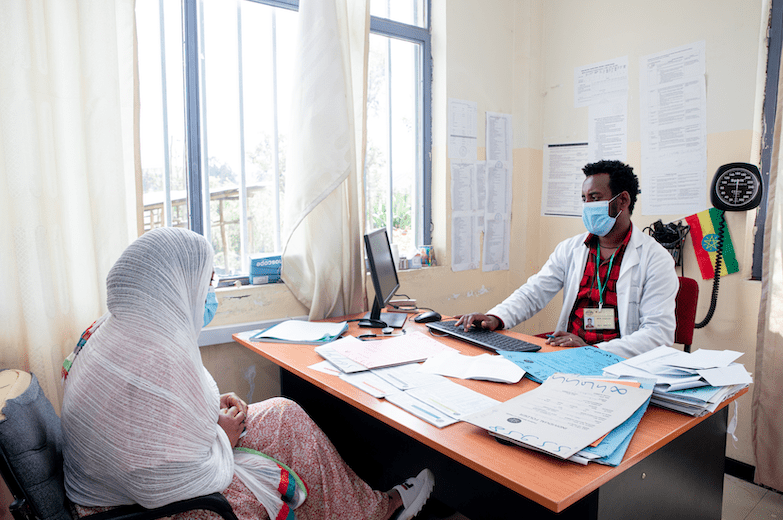Making a Case for Shifting Focus and Investment to Transform Health Services Delivery
December 10th, 2021 | viewpoint
Ethiopia is digitizing its various health information systems to improve collection, aggregation, and use of quality routine health information at all levels in the health system. A lot has been achieved, including rolling out District Health Information System 2 (DHIS2) as a national health management information system, including management of reporting hospital and health center reform key performance indicators; reporting of the national public health emergency management system; and recently COVID-19 surveillance and tracking. There are also efforts to digitize the upstream and downstream supply chain operations, the human resource information system, and the regulatory information system. However, investments on data systems should be better complemented by digital tools that target improvement in the availability and quality of health care services and ultimately improve the health of Ethiopians.
In 2018, the World Health Organization (WHO) published Classification of Digital Health Interventions based on the targeted primary user interventions for clients, health care providers, health system or resource managers, and data services. Looking closely at the priorities and progress of implementation of digital health interventions in Ethiopia, most of the focus in the past was on the last two categories of digital health interventions, despite efforts to roll out electronic medical records (EMRs) and building service delivery job aids within the electronic community health information system (eCHIS). Opportunely, the national eHealth Architecture and the recently endorsed digital health blueprint have identified various point-of-care digital health tools as priority shifts toward development and implementation of these systems.
The Digital Health Activity (DHA) team recognizes that interventions targeting health system managers and data users can improve the capability of the Ethiopian health system to generate and use data to inform strategic and operational decisions and improve health system performances. Documented evidence shows the health impacts of strengthening the national health information system. However, it is equally important to deploy digital tools that serve as service aid, ensure adherence to treatment standards and guidelines and provide clinical decision support functionalities for the health care workers while allowing data to be captured digitally for management of individual patient level data. The EMR and eCHIS are best examples of digital tools that help health care workers provide standardized health care services. Similarly, digital tools that have potential to empower patients/clients about their own health should be at the top of the digital health implementation agenda. For instance, we can think of the tools for personal health tracking, targeted and untargeted client health communications, and on-demand client health communications. Right now, however, tools that target patients/clients are not the priorities of the digital health interventions in Ethiopia.

Accordingly, DHA’s focus is shifting towards community beneficiaries and health care workers targeting improvement in healthcare and health outcomes. In this approach, the direct beneficiaries of interventions supported by the DHA are health care providers at community and health facility levels and most importantly the patients/clients and members of the community. The goal of this shift in approach is to digital health interventions that have a direct impact on improving health care services (promotive, preventive, and curative); client/patient empowerment; and standard of care provision and referral, which will ultimately improve the quality-adjusted life year (QALY) and disability-adjusted life year (DALY) of the Populus to create a prosperous society.
Some of the major rationales in this shift in approach include:
The Digital Health Activity will support the implementation of digital health tools that will improve service delivery and quality and patient satisfaction.
We strive to build lasting relationships to produce better health outcomes for all.